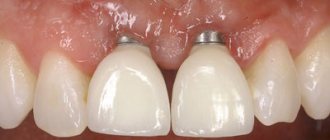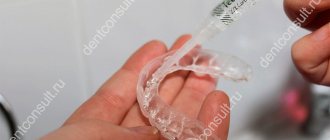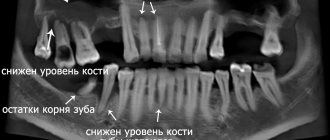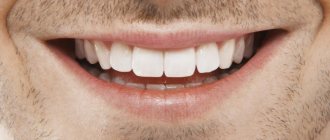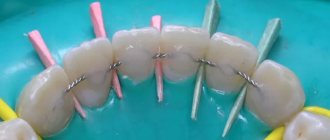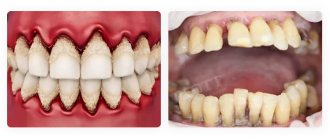Every person experiences tooth extraction sooner or later. The first experience was with baby teeth, but, as a rule, no problems arise with them, and they fall out safely even without medical assistance. But with permanent teeth the situation is different. Due to their complex root system, it is sometimes very difficult to remove them, and various additional techniques have to be used. Fortunately, modern dentistry has a whole range of modern methods that are low-traumatic and allow you to cope with even the most complex cases.
What are the indications for tooth extraction?
Tooth extraction in dentistry is always a last resort procedure. Doctors make every effort to save the tooth or at least part of it, but in some cases extraction cannot be avoided. We are talking about many conditions.
- Chronic periodontitis, which is in the acute stage. As a rule, if the inflammatory process continues to recur, it is recommended to remove the tooth to prevent further spread of the infection.
- Very strong and deep carious lesion of the tooth.
- Odontogenic osteomyelitis, which usually develops as a complication of infection and is characterized by damage to bone tissue.
- The tooth constantly injures soft tissues. This happens especially often if the tooth is in an incorrect position. Permanent trauma is very dangerous, therefore, if the problem cannot be solved in another way, removal is recommended.
- Fracture of a tooth root or any other mechanical damage.
- Late stages of periodontitis, when the teeth begin to become very loose.
- An impacted tooth that cannot erupt and is covered on top by gum tissue. Most often this happens with wisdom teeth.
- Carrying out orthopedic treatment or prosthetics that cannot be done without removing one or more teeth.
Reasons for performing tooth extraction surgery
Indications for an operation that involves removing the incisor from the alveolar socket are divided into two groups:
- emergency;
- planned in advance.
Emergency indications for performing tooth extraction are:
- acute inflammatory processes of a purulent nature (including those spreading to bone tissue);
- severe damage of no functional significance;
- severe acute pain in the absence of opportunities for conservative therapy;
- damage to the dental crown that cannot be repaired by placing a filling or dental prosthetics.
Indications for planned tooth extraction are:
- the formation of basal cysts and the development of periodontitis in the tissues surrounding the incisor with impassable root canals;
- periodontitis, accompanied by severe tooth mobility;
- the presence of supernumerary, impacted or incorrectly located teeth that injure the mucous epithelium of the oral cavity, promote the development of inflammation, provoke pain, impair diction or interfere with food intake;
- tumor growths in jaw tissues;
- the presence of teeth that prevent prosthetics or orthodontic treatment.
Contraindications to tooth extraction
Of course, if the situation is urgent and tooth extraction is inevitable, the doctor will perform the procedure immediately after the patient seeks help. But if the operation is planned, then in some cases it is recommended to refrain from it. Contraindications include the following conditions:
- acute viral disease, pneumonia;
- oncology;
- some blood diseases;
- recent myocardial infarction;
- tumors and other lesions in the oral cavity.
In addition, tooth extraction is a procedure undesirable for pregnant women. But if it cannot be avoided, then doctors recommend, if possible, to carry it out in the second semester.
Removing teeth before prosthetics should not interfere with treatment
If your orthopedist recommended preliminary tooth extraction before prosthetics, you should not be afraid of this and refuse orthopedic treatment. It is important to understand that any qualified doctor will advise removing such crowns; in order to install a prosthesis, it is important to put the oral cavity in order.
Of course, this is a necessary necessity, which will somewhat delay orthopedic manipulations and increase the treatment period. You can start taking impressions only 3-4 weeks after removal, when inflammation subsides, swelling goes away and the soft tissues return to their normal state. You should care for the hole in the same way as during extraction for surgical reasons.
Preparing for tooth extraction
For many people, tooth extraction is a very unpleasant and even frightening procedure. In fact, such fears are a consequence of those times when this manipulation was done without anesthesia using rough instruments. Today dentistry has stepped far forward, so removal takes place in much more comfortable conditions. You should not be afraid of the procedure, because the right psychological attitude is also one of the important conditions for the success of the operation.
To ensure that no incidents occur during tooth extraction, you must inform the surgeon about your state of health. If you have allergies, chronic or acute illnesses, be sure to tell your doctor. The same goes for the medications you take. Avoiding complications will also help avoiding alcohol and cigarettes the day before the procedure.
It is important to remember that you will not be able to eat or drink for some time after tooth extraction. Therefore, it is recommended to eat well before the procedure.
Anesthesia for tooth extraction
Tooth extraction is a rather painful procedure, so it is almost never performed without anesthesia. The exception is people with allergies to anesthetic drugs. Most often, when extracting teeth, local anesthesia is used using an injection. Usually we are talking about the so-called conduction anesthesia, which is injected directly into the nerve and has an increased concentration of the active substance. Naropin, ultracaine, ubistezin, etc. are used as the latter.
In addition to local anesthesia, general anesthesia may also be used during tooth extraction. Today, sedation is the most popular. This is a procedure in which the patient is given a strong sedative. He is in fact conscious, but does not feel pain and remains as if in a dream. Anesthesia is a more serious procedure that involves complete loss of consciousness, which in turn entails a longer recovery period.
General anesthesia for tooth extraction is used if the patient is intolerant to drugs for local anesthesia. In addition, it is used if a person has mental disorders, as well as if he experiences severe fear of the procedure. It is also justified if several teeth are to be removed at the same time. For example, sedation is often used when wisdom teeth are extracted. The procedure is done under the supervision of an anesthesiologist. Before the manipulation, the patient undergoes tests, performs a cardiogram and other procedures to diagnose the condition of the body.
Surgical technique
In modern dentistry, two tooth extraction techniques are used:
- simple;
- involving additional surgical procedures.
Simple removal is performed in cases where the coronal or root part of the damaged incisor is perfectly visualized and is well fixed in the forceps.
In such situations, the extraction procedure consists of the following steps:
- collecting anamnesis (the doctor makes sure that the patient has no contraindications to the procedure, carefully examines x-rays);
- anesthesia;
- peeling the gums from the enamel using a special tool;
- fixing the forceps on that part of the incisor that is located above the bone of the alveolar process;
- rocking it, accompanied by destruction of the ligamentous apparatus holding it in the alveolus;
- extraction of the tooth and all mobile fragments of bone tissue from the alveolar socket;
- removal of cysts, granulomas, sanitation of purulent foci in the area of the removed incisor (if indicated);
- treating the hole with antiseptics and anti-inflammatory drugs;
- suturing.
Indications for surgical tooth extraction may include:
- curvature of tooth roots, preventing safe tooth extraction;
- complete destruction of the part of the incisor rising above the alveolar process;
- increased fragility of the dental crown;
- incomplete eruption;
- its presence in the gum in a horizontal position.
Performing operations of this type may be accompanied by incision of the gum tissue, removal of the bone hiding the unerupted incisor using an osteotome or drill, sawing the crown into several parts and taking other measures to facilitate the extraction of problem teeth.
What methods of tooth extraction are used?
In modern dentistry, different methods of tooth extraction are used. In most cases, the choice of one method or another depends on the characteristics of a particular situation.
Simple method
In this case, we are talking about removing a tooth with a well-preserved crown, which is located in an accessible place. And although extraction is carried out exclusively by surgeons, such manipulation, especially in public clinics, is often performed by dental therapists.
During tooth extraction, a specialist uses different instruments. First of all, these are tongs. They vary depending on what teeth they are used for. For example, there are S-shaped forceps that are used to remove premolars and molars in the upper jaw, or forceps that are used to remove exclusively lower molars. In addition to forceps, luxors and elevators are also used, which perform the functions of lever tools.
Direct tooth extraction can occur in different scenarios. So, when extracting a single-rooted tooth, the doctor uses a technique called rotation. It involves rotating the tooth around its axis, which allows you to quickly remove the element. If the tooth is multi-rooted, then luxation or rocking is necessary. Thanks to gradual loosening movements, the doctor gradually extracts the tooth along with the root.
Complex method
Complex extractions are usually performed on multi-rooted teeth. The fact is that sometimes even prolonged swinging of the tooth does not produce results. In such a situation, the specialist uses a drill and saws the tooth, separates the roots and gradually removes all the parts. A similar procedure is also often used when the crown of the tooth is severely damaged or there are other serious problems, for example, the root system is too thin and fragile. The situation is even more complicated if the tooth is completely or partially impacted or is in an incorrect position. In particular, this often happens with wisdom teeth. In such a situation, it is necessary to first cut through the soft tissue and only then saw the tooth itself.
Piezosurgery
This method is innovative, so it is not yet widespread. Piezosurgery is usually used to remove complex teeth. In this case, the tissue incision is made with an ultrasonic scalpel. This method is much less traumatic, since ultrasound in no way directly comes into contact with tissues. Thus, the patient recovers much faster than after conventional surgery.
Laser tooth extraction
As in the case of piezosurgery, in this case the tooth is removed not with conventional instruments, but with the help of a laser beam. This is also a non-contact technique associated with less blood loss and less risk of injury. In addition, the pain of the procedure itself when using a laser is much lower, so this option is suitable for people who suffer from allergies to anesthetics. Unfortunately, both piezosurgery and the use of laser are quite expensive manipulations, so they are not yet performed widely.
What instruments are used to remove teeth?
Depending on the clinical situation, the instruments used to remove teeth may be needed in different combinations, or the doctor may be content with just one.
1) Tooth extraction forceps
- There are forceps for removing upper and lower, front and back teeth. In addition, there are so-called universal (button) dental forceps for extracting any tooth. For third molars, which are displaced towards the tongue or cheek during eruption, there are special forceps for removing wisdom teeth, which allow you to very tightly cover the crown part of the eighth teeth. There are also special root forceps for removing only one root from the bone tissue.
Deputy Chief physician Sergey Evgenievich Brodsky
Sign up for a free consultation
+7
2) Elevators for dental extraction
- This type of tool is made in the form of a sharpened screwdriver with a groove, with which you can pick up and dislocate a tooth or a separate tooth root. There are a great many options and types of dental elevators. For wisdom teeth, there is a special elevator, the so-called “Lecluse Key,” which facilitates the dislocation of eighth teeth that are tightly seated in the jaw.
Tooth extraction procedure: what is important to know?
The removal of each tooth can take place according to a different scenario. To predict it, the doctor conducts an examination and also takes an x-ray. In most cases, removing teeth from the upper jaw is easier and faster, but teeth on the lower jaw can create certain problems. This is explained by the fact that the lower chewing teeth have a much more complex root system. In addition, the bone tissue itself is denser here.
Also, before the procedure, it is important for the patient to prepare for how long it may last. As a rule, simple tooth extraction goes very quickly. The doctor needs 5-10 minutes to carry out all the manipulations. However, if we talk about complex removal, then in this case the time spent in the office may last for 20-60 minutes.
How is a complex tooth extraction performed?
Options for non-standard tooth extraction are required in different clinical situations. The most common option is the difficult removal of the eighth tooth, especially when it has not fully erupted or is generally lying and completely immured in the jaw.
The most commonly used method for complex tooth extraction is:
- Conducting anesthesia;
- Creating access to the tooth to be removed, dissecting the mucous membrane and periosteum, forming an evacuation window in the bone tissue of the jaw, in which the unerupted (impacted) tooth is hidden;
- Extracting a tooth from the jaw using an elevator;
- Toilet of the surgical wound, including treatment with furatsilin and rinsing with hydrogen peroxide, filling the voids from under the extracted complex tooth with bone powder, applying a membrane and suturing the gums;
- Prescription of anti-inflammatory therapy.
What care is required after tooth extraction?
Regardless of whether you had a simple or complex tooth extraction, such a situation requires monitoring your well-being and the wound surface on the gum. First of all, this concerns the proper healing of the hole. Ideally, a blood clot should form in it, which indicates that healing is proceeding without problems. It is for this purpose that the doctor immediately after the procedure places a gauze swab into the resulting cavity. It must be kept in the indicated place without removing it for 20-30 minutes, and only after that can it be removed. If the hole has formed correctly, then in a couple of days it will be covered with epithelium, and after a couple of months new bone tissue will appear in its place.
In order not to interfere with the proper healing of the wound, you must follow the following recommendations:
- Do not rinse your mouth for a couple of days or use a toothbrush in the area where the tooth was removed;
- For the first time after the procedure, avoid hot drinks and food;
- do not take a hot shower or bath for 2-3 days after tooth extraction;
- for the first few hours, completely abstain from food and drinks;
- Until the wound heals completely, try to chew on the other side of your mouth.
Many people experience swelling in the area where the tooth was removed, which can last for several days. To make it less pronounced, it is recommended to apply ice to the cheek after the procedure. Minor pain and low-grade fever may also be a concern. This is considered normal, and to alleviate the condition, the doctor prescribes painkillers. He may also prescribe an antibiotic if in a particular case he considers its use justified. In such a situation, it is extremely important to undergo a full course of treatment in strict accordance with the doctor’s recommendations.
Metal-ceramic crowns
Metal-ceramic crowns on teeth
, began to be manufactured in Russia about 30 years ago. They replaced metal-plastic and metal, and it was the most innovative and modern type of prosthetics. And not every patient could afford a metal-ceramic crown, since its cost was significant.
Metal-ceramic crowns are
an artificial material that is a composition of metal and non-metal (ceramics). The base of the future crown (frame) is cast from metal and on top of it by firing, ceramic mass is applied layer by layer. The metal frame-base, 0.5 mm thick, is made of alloys: titanium, as well as a more expensive alloy containing gold and platinum - the so-called “ceramics on gold”. When applying ceramic mass, the thickness of the crown increases and amounts to 1.7 mm, and the crown becomes more massive (heavy). Of course, titanium-based metal ceramics are less massive and lighter, but they have very strict installation instructions.
Service life of metal-ceramic crowns.
A metal-ceramic crown does not require replacement and will last a lifetime; this is the biggest misconception among patients. Unfortunately, this is not the case, and the service life of metal-ceramic crowns is limited. You should always keep in mind that some types of metal ceramics may behave differently in the oral cavity.
Service life of metal-ceramic crowns
according to WHO, it ranges from three to five years if the frame is made of base alloy
metals (nickel-chrome and cobalt-chrome).
The most common cause of crown loss is secondary caries, which forms between the tooth and the crown. Chromium-nickel alloys can oxidize over time under the influence of saliva and some patients are allergic to nickel. If a gold-platinum alloy is used, the average service life of such crowns is from five to ten years. However, it is worth considering that the cost of metal-ceramic crowns based on a noble alloy is high and comparable to the cost of crowns based on zirconium dioxide. Failure to follow crown care recommendations may result in tooth loss. The patient must follow all care recommendations, namely, undergo regular examination of the oral cavity, visit a periodontist
and carry out the preventive
“Vector” procedure.
And then you will extend the life of your crowns and they will delight you for a long time.
Indications and contraindications for the use of metal-ceramic crowns.
Metal-ceramic crowns are the most common type of prosthetics, as they are affordable
on cost and production time. Metal-ceramics can be used to make single crowns and bridge structures not only for your own teeth, but also for implants. Metal-ceramic crowns have their own indications and contraindications for use.
When using prosthetics with metal-ceramic crowns, only pulpless teeth with high and large clinical crowns can serve as support for them.
If natural teeth have a low clinical crown, then it is necessary to install metal core inlays. In case of periodontitis
and
bleeding gums ,
it is undesirable to install metal-ceramic crowns, since the metal frame will not only injure the gingival margin, but also cause inflammation.
The development of the inflammatory process after the installation of metal-ceramic crowns can lead to repeated prosthetics in a short time. Pathological tooth wear and bruxism
are a direct contraindication to metal-ceramic prosthetics, as it will lead to chipping of the ceramic mass from the artificial crown.
Positive aspects of metal-ceramic crowns.
Metal ceramics combines the positive characteristics of metals and
porcelain materials.
- Available in cost and production time.
- Relatively durable, withstands significant chewing loads.
- Allows you to produce and imitate any shape, color and shade of natural teeth.
- On the chewing group of teeth, undesirable on the smile zone (anterior group of teeth).
- Service life
according to WHO is 5-8 years.
Disadvantages of metal-ceramic crowns
- The preparatory stage requires deeper preparation of the teeth, since the thickness of the crown is not
should be less than 1.7mm, and this can lead to damage to the pulp, i.e. her burn. - They can only be supported by pulpless teeth with high clinical crowns.
- Depulpation significantly reduces the strength of hard tooth tissues and the prepared stump turns out to be very fragile. There is a high probability of the tooth crown breaking off, and in the worst case, the tooth will have to be removed.
- It is necessary to install stump inlays made of metal
. - If sufficient preparation was not possible, which often happens, the crown will look massive and injure the gingival margin.
- Metal-ceramic crowns, in terms of external indicators, are far from the most aesthetic, as they lack natural transparency. And the reason for this is the metal frame. A metal-ceramic crown in one row can differ significantly in color and structure from natural teeth.
- Possible allergy or intolerance to metal, especially nickel-chrome.
- Possible chipping of the ceramic mass.
- Often the metal frame shines through the thin gingival margin and creates the effect of “bluish gums”!
The difference between metal-ceramic crowns and zirconium crowns.
Modern science has given dentists new opportunities and modern materials such as
zirconium dioxide and pressed ceramics, and metal-ceramic crowns no longer meet the requirements of an “ideal crown” in full. And now it can be classified as a budget category of prosthetics. This is a kind of compromise between price and quality.
Metal-ceramic crowns and zirconium crowns have a lot of differences not only in manufacturing technology, but also in aesthetic parameters.
The preparatory stage in the manufacture of crowns from zirconium dioxide and metal ceramics is one of the significant differences in prosthetics. Unlike zirconium crowns, tooth preparation for a metal-ceramic crown is accompanied by the removal of a fairly large layer of hard tissue, which leads to depulpation of the tooth (removal of the nerve) and the prepared stump is significantly weakened.
Metal-ceramic crowns on teeth do not have sufficient transparency,
natural teeth, since there is a metal frame inside the crown, which deprives the structure of transparency and if you install a crown on one tooth in a row, it may differ from the rest of the teeth in its structure. In contrast, zirconia crowns
has high aesthetic characteristics, good light transmission, a wide color palette and completely imitates natural teeth. Zirconium dental crowns are safe and support the healthy state of gum tissue, as they are made of biocompatible material. They are functional, reliable and have high strength ratings.
Cost of metal-ceramic crowns.
The cost of metal-ceramic crowns
in Moscow
will depend on the materials used,
the degree of tooth destruction, from additional work that the dentist will need to do before installing the crown.
The price of metal-ceramics
using high-quality cobalt-chromium alloy and ceramic materials from German or Japanese manufacturers will be 20-25 thousand rubles. This cost includes the work of a highly qualified orthopedic dentist and dental technician.
When using a nickel-chromium (oxidizes in the oral cavity and is considered harmful) alloy, the total cost of prosthetics for one tooth can be reduced to 10 thousand rubles. Judging by the reviews of patients and dentists, metal-ceramic crowns are not the most aesthetic, so they are not recommended to be installed on the front group of teeth, but only on the chewing teeth. If you want to aesthetically and reliably restore your teeth, contact the Dentist dental clinic. We don’t just install crowns, but restore self-confidence and natural sensations.
Our patients are always satisfied with the results of our work!
Possible complications after tooth extraction
In some cases, tissue healing after tooth extraction does not occur correctly, or an infection is observed. In this situation, we talk about complications after surgery. They are indicated by severe pain, great swelling, and elevated temperature. If pathogenic microflora gets into the wound, then bad breath and purulent discharge may also appear. The listed symptoms may indicate a cyst or fistula.
A common complication after tooth extraction is alveolitis. This condition is accompanied by a dry socket, that is, the absence of a blood clot. The main sign of pathology is quite severe pain. Alveolitis is most often diagnosed in women taking contraceptives and in people who smoke.
The development of complications after tooth extraction is often a consequence of neglecting the doctor’s recommendations. In addition, the reason may be related to poorly performed manipulation or low qualifications of the doctor. That is why it is always important to contact experienced specialists who master modern techniques and cope well with even the most complex and extraordinary cases.
come back
Stages of healing
The process of complete recovery after tooth extraction is quite long, but effective: all surrounding tissues are completely regenerated.
- 3–4 days - development of granulation tissue;
- 14th day - complete filling of the hole with granulation tissue;
- 45th day - filling the hole with spongy bone tissue;
- end of the 3rd month - transformation of spongy bone tissue into dense;
- after 4–6 months (8–10 in the presence of complications), the socket is radiologically indistinguishable from the surrounding tissue [2].
After the hole has healed, it is worth thinking about restoring the integrity of the dentition. Modern implantation technology makes it possible to obtain a prosthesis that does not differ from natural neighboring teeth either in appearance or in function.
List of sources
- Timofeev A. A. Guide to maxillofacial surgery and surgical dentistry. Kyiv: Chervona Ruta-Ture, 2002. // URL: https://studfile.net/preview/2767270/ (date accessed 08/08/2020).
- Propaedeutics of dental diseases. Propaedeutics of surgical dentistry: tooth extraction surgery: textbook / Ed. Garages S. N. Stavropol: St. State Medical University, 2022. // URL: https://stomfaq.ru/uchebnoe-posobie-pod-redakciej-prof-sn-garaji-stavropole-2017/index.html (access date 08.08.2020 G.).
- Orthodontist: “Sometimes orthodontic non-intervention is a respect for evolution. Unfortunately, modern dentistry often goes against nature,” interview with Yu. L. Denisova // URL: https://doc.by/vopros-vrachu/ortodont-inogda-ortodonticheskoe-nevmeshatelstvo-eto-uvazhenie-k-evolyucii- k-sozhaleniyu-sovremennaya-stomatologiya-chasto-idet-protiv-prirody/ (accessed 08.08.2020).
Timofeev volume 1-3 / volume 1 / 03. TEETH REMOVAL / 3.2. TEETH REMOVAL TECHNIQUE
3.2. TEETH REMOVAL TECHNIQUE
♦ Preparing for tooth extraction surgery
After the doctor has established the indications for tooth extraction, the issue of preparing the patient for surgery, the method of pain relief, the choice of the necessary instruments, and the method of tooth extraction should be decided.
First, an inspection
tooth that needs to be removed. The strength of the crown is established, allowing the use of crown forceps when removing a tooth. If there is a significantly damaged tooth crown that does not allow the use of crown forceps and prevents the use of root forceps or a direct elevator, it is advisable to bite it first.
The degree of tooth mobility and the presence of inflammation are determined. Using an x-ray, we establish the features of the bone tissue surrounding the roots of the tooth, the location of the roots, their number, size and shape, which can significantly complicate the operation, as well as their relationship with the nasal cavity, maxillary sinus, and mandibular canal. On an x-ray we can detect impacted, dystopic and supernumerary teeth.
The patient, adult or child, must be warned
about the need for tooth extraction, about the expected duration of the intervention, about the possible development of complications during its implementation. It is necessary to talk about the sensations that the patient will experience during the operation. With timely and correct warning, patients react more calmly to medical procedures. Persons with a labile nervous system should undergo sedative preparation using tranquilizers and sedatives.
You need to wear gloves when performing surgery. The treatment of the surgeon's hands is carried out according to generally accepted surgical techniques.
P
preparation of the surgical field
consists of mechanical removal of food debris and plaque from the mucous membrane and teeth. To do this, rinse the mouth with antiseptic solutions or wipe the surgical field with gauze balls moistened with these solutions. It is advisable to remove tartar in advance.
Rice. 3.2.1.
Forceps for removing teeth on the upper jaw.
♦ Tools for tooth extraction
Forceps are used to remove teeth
various designs and
elevators. Forceps .
The forceps are distinguished:
1) cheeks -
part of the forceps that serve to grasp the crowns of teeth or roots, i.e. provide fixation of the forceps on the tooth;
2) handles (jaws, handles) -
areas for which the doctor fixes the forceps in his hands, i.e. place of application of the doctor’s efforts;
3) lock -
the area connecting both halves of the forceps.
Forceps are distinguished depending on the group of teeth for which they are intended to remove (Fig. 3.2.1-3.2.5):
— forceps for removing upper and lower teeth;
— forceps for removing incisors, canines, premolars and molars;
— forceps for a specific side (right or left) or for removing teeth on both sides.
Rice. 3.2.2.
Crown forceps for
Fig.
3.2.3. Tooth extraction forceps
removal of molars on the upper jaw. lower jaw.
Rice. 3.2.4.
Incisor removal forceps
Fig.
3.2.5. Molar Extraction Forceps
and premolars on the lower jaw. and wisdom teeth on the lower jaw.
Forceps are distinguished by the following characteristics:
• 1) angle sign;
• 2) bending of tongs and handles;
• 3) sign of the party;
• 4) width of the cheeks.
Angle sign.
Forceps for removing upper teeth are designed so that the axis of the cheeks coincides with the axis of the handles (forming a straight line) or the angle between them is obtuse (more than 90°). In some forceps for removing upper teeth, the axes of the cheeks and handles are parallel or almost parallel.
In contrast to what was said earlier, with forceps for removing lower teeth, the angle between the axis of the cheeks and handles approaches a straight line.
Bend sign.
Straight forceps are used to remove the upper incisors and canines, and forceps with an S-shaped bend are used to remove the upper premolars and molars.
Thanks to the latter, the cheeks of these forceps can be correctly applied to the upper small and large molars, i.e. without resting on the lower teeth. To remove the upper wisdom teeth, forceps that have a significant bend, or bayonet-shaped (bayonet)
forceps, are used.
When removing lower teeth, the forceps can be curved along a plane (designed to remove large lower molars when the mouth is poorly opened) or curved along the edge (beak-shaped) -
When applying forceps to a tooth, the handles are located one above the other (designed for removing incisors, canines, premolars and molars).
Side sign.
Relates to the removal of large molars in the upper jaw. In forceps intended for removing upper molars, the cheek on the outer side (cheek) ends with a protrusion - a spike located between two notches, and on the other cheek there is a semicircular groove. The cheek, which has a tenon, moves into the space between the two buccal roots of the large molars, and in the recesses (located in front and behind the tenon) the mesial and distal buccal roots of the molar are tightly held. The other cheek covers the palatine root.
Thus, right and left side forceps are used to remove large molars in the upper jaw.
If there is a spike on both cheeks of the forceps, then they are intended for removing lower molars. When they are applied, the spike moves into the space between the mesial and distal roots of the lower molar.
P
Cheek width indicator.
To remove tooth roots, forceps are designed that have the narrowest cheeks. To remove incisors, canines and premolars, narrower cheeks of forceps are used than to remove large molars. The cheeks for removing incisors are narrower than those for removing canines and premolars. In addition, the cheeks can close together and not close.
Elevators.
They consist of three parts: the working part, the handle and the connecting rod (Fig. 3.2.6).
Rice. 3.2.6.
Lateral and direct elevators.
There are straight, angular and bayonet-shaped elevators.
Straight elevator.
The working part is convex (semicircular) on one side, and concave (has a grooved shape) on the other. The end of the working part is thinned and rounded (can be pointed on one side).
The working part of a direct elevator can be spear-shaped, one side is smooth, the other is convex. Elevators with a spear-shaped working end are called bayonet-shaped .
And if the handle of the tool is located perpendicular to the working part and the connecting rod, then it is called “ Lecluse elevator .”
and is designed to remove lower wisdom teeth.
Corner (side) elevator.
The working part is curved along the edge and located at an angle of about 120° to the longitudinal axis of the elevator. One surface of the elevator cheek is convex, the second is slightly concave with longitudinal notches. The end of the working part is thinned and rounded (may be pointed or jagged). During tooth root removal, the convex part of the working end of the elevator faces the wall of the socket, and the concave part faces the root being removed. The concave surface of the elevator cheek can be turned to the left (towards you) or to the right (away from you).
♦ Position of the doctor and the patient
When teeth are removed, the patient is in a dental chair in a sitting or semi-sitting position, and on the operating table in a lying position.
Depending on the location of the tooth being removed, the position of the patient and the doctor changes. When removing the upper teeth, the patient sits in a dental chair with the back and headrest slightly reclined. The chair is raised to such a height that the tooth to be removed is approximately at the level of the shoulder joint
doctor
The doctor is located to the right and in front
of the patient.
When removing the lower teeth, the chair is lowered as low as possible. The back of the chair and the headrest are moved so that the patient's torso and head are in an upright position or the head is tilted slightly forward. The lower jaw is located at the level of the elbow joint
the doctor's lowered hand. If the patient is tall and the doctor is short, the back of the chair should be tilted back and the patient should be placed in a semi-sitting position. Using a headrest, the patient's head is raised to a vertical position.
When removing the lower right large and small molars, the doctor is to the right and slightly posterior
from a patient.
When removing the lower
frontal teeth, the position of the doctor changes - he stands
to the right and slightly ahead
of the patient.
When removing the lower left large and small molars, the doctor is positioned to the left and slightly in front
from a patient.
The correct position of the patient and the doctor during tooth extraction creates the most favorable conditions for viewing the surgical field, fixing the jaws and removing teeth or roots. An incorrect choice of position for the patient and the doctor can lead to mistakes that result in various complications (incomplete tooth extraction, dislocation of the lower jaw, etc.).
♦ Methods for fixing forceps in the doctor's hand
First way. The tongs are held so that the thumb is located on one side below the lock and covers one handle, and all other fingers are located on the opposite side of the tongs, of which the second and third fingers clasp the tongs from the outside, and the fourth and fifth are in the space between the handles (Fig. 3.2.7).
The first finger holds the forceps motionless, the second and third fingers squeeze and fix them. The other handle of the forceps can be moved away by extending the fourth and fifth fingers. Subsequently, when squeezing (fixing) the tongs, the fourth and fifth fingers are removed from the space between the handles (Fig. 3.2.8) and used to grasp the handle from the outside (i.e. with four fingers).
Second way. The thumb clasps one handle, the second and third are between the handles, and the fourth and fifth clasp the other handle from the outside. Straightening the third finger, we move the forceps apart, and bending the fourth and fifth fingers, we squeeze them. After applying the forceps to the tooth, the third finger is removed from the space between the handles and placed on the outside of one of the handles, i.e. where the fourth and fifth fingers are located (Fig. 3.2.9-3.2.10).
Rice. 3.2.7.
Method of fixing the forceps,
Fig.
3.2.8. Method of fixing the forceps,
curved along the edge (position 1). curved along the edge (position 2).
Rice. 3.2.9.
Method of fixing the forceps,
Fig.
3.2.10. Method of fixing the forceps,
curved along the plane (position 1). curved along the plane (position 2).
Rice. 3.2.11, 3.2.12.
Methods for fixing forceps curved along a plane (when using forceps to remove lower wisdom teeth).
Rice. 3.2.13, 3.2.14.
Methods for fixing forceps.
Third way. The thumb is on top of the lock of the pliers, and the rest (in different versions) clasp the handles from below, from the outside and from the inside (Fig. 3.2.1 1-3.2.14).
Improper holding of the forceps
during tooth extraction leads to slipping of the forceps, pushing or slipping of the tooth being removed, damage to antagonist teeth and other complications.
♦ Techniques for removing teeth with forceps
The removal operation begins with the separation of the circular ligament from the neck of the tooth. It is convenient to separate the gums using a smoothing iron or a narrow rasp. When the teeth to be removed are severely damaged, it is necessary to separate the gum from the edge of the alveolus ( syndesmotonia
- peeling of the circular ligament of the tooth). This makes it easier to apply the cheeks of the forceps and makes it possible to more accurately navigate in relation to the transverse size of the root, and also preserves the integrity of the mucous membrane when extracting the tooth.
Tooth extraction is carried out using forceps and consists of several sequential techniques:
1) application of forceps;
2) advancement of the cheeks of the forceps;
3) closing the forceps (fixation);
4) tooth dislocation (luxation or rotation);
5) extraction of the tooth from the socket (traction).
Forceps delivery.
Holding the forceps in your hand using one of the previously mentioned methods, open their cheeks so that the crown of the tooth or root can fit between them. One cheek of the forceps is applied on the lingual (palatal) side, the other on the buccal side of the tooth. The axis of the pliers must coincide with the axis of the tooth. A mismatch between the axis of the forceps and the tooth leads to a root fracture or injury to the adjacent tooth.
Advancing the cheeks of the forceps.
Press the right hand on the forceps to move the cheeks under the gum.
On the lower jaw, this is ensured by pressing with the thumb of the left hand on the locking area of the forceps; on the upper jaw, by pressing on the handles of the forceps. The cheeks are advanced until you feel a tight grip around the tooth. If the crown of the tooth is destroyed, then the cheeks of the forceps are advanced so that they grasp the edges of the wall of the socket (alveoli). When a tooth is removed, these sections of the alveolar edge break off, i.e. subperiosteal resection occurs .
Closing the forceps .
The first two steps are performed with the forceps not fully closed. Then their handles are squeezed tightly to firmly fix the tooth or its root being removed. The forceps should be squeezed with such force as not to crush the crown or root of the tooth.
The tight closure of the forceps seems to unite the tooth and forceps into one whole. When the forceps move, the tooth moves. Weak fixation of the forceps does not allow tooth removal, and strong fixation leads to crushing of the crown or root of the tooth.
Tooth dislocation.
When a tooth is dislocated, the periodontium, which connects the tooth to the alveolar wall, is torn.
During dislocation, the doctor swings (luxation)
the tooth to the buccal and lingual (palatal) sides or
rotates (rotates)
the tooth around its axis by 25-30° in one direction or the other. These movements should be carried out gradually increasing the amplitude of vibrations. With such movements, the walls of the socket shift and break, i.e. The walls of the alveoli move apart.
The first swinging movement is made in the direction of least resistance. On the upper jaw, the first movement is made outward,
and then
inside .
Except for the case when
the sixth
tooth is removed.
The outer wall in the area of the sixth upper tooth is thickened due to the zygomatic-alveolar ridge, therefore, when removing this tooth, the first movement is made inward .
On the lower jaw
the outer side of the walls of the sockets in the area
of the second and third molars is
Therefore, the first dislocation movement is made in
the lingual direction.
When removing the first molar, premolars, canine and incisors on the lower jaw
The first swinging movement is made
outward.
Rotational movements can be carried out in the area of teeth that have one root,
approximating a cone in shape.
These movements are advisable when removing incisors, canines and premolars on both jaws and when removing separated roots of upper multi-rooted teeth.
Caution must be exercised when performing rotational movements when removing the lower incisors, because their roots are flattened on the sides.
However, using only rotational movements it is not always possible to remove a tooth or root. Therefore, rotational movements should be combined with rocking movements (i.e. rotation with luxation).
Extracting a tooth from the socket (traction)
It is the final stage in the tooth extraction operation. After complete separation of the tooth root from the retaining ligaments, it is extracted. The tooth is extracted smoothly, without jerking, often outward, less often inward. Up or down, depending on the location of the tooth in the lower or upper jaw.
If the doctor uses excessive force when extracting a tooth, the forceps can forcefully hit the teeth of the opposite jaw, damaging them or the mucous membrane.
Tooth extraction is completed by bringing the edges of the postoperative wound together by squeezing them with the fingers of the right hand, i.e. the doctor repositions the fractured edges
alveolar process of the jaw. This helps to reduce the degree of gaping of the postoperative wound and has a beneficial effect on its healing, because the size of the connection between the wound and the oral cavity decreases.

